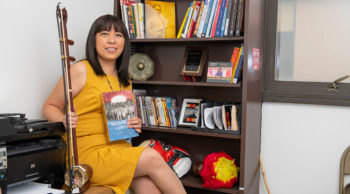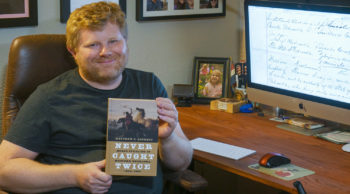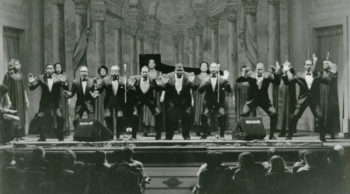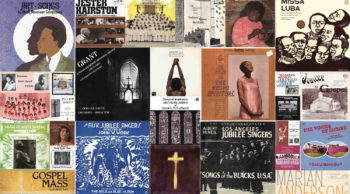In her new book, Instruments of Empire: Filipino Musicians, Black Soldiers, and Military Band Music during U.S. Colonization of the Philippines, CSUDH Assistant Professor of Asian-Pacific Studies Mary Talusan Lacanlale doesn't just reveal the hidden history of the Philippine Constabulary Band–she uncovers some of her own family history, as well. The Philippine Constabulary Band, a group of Filipino musicians originally formed in 1902, toured the world for several decades to great acclaim, but they also helped to convince audiences that the American colonization of the Philippines was worthwhile and just. The band dissolved at the outset of World War II, and its history was all but ... Read More
History
Japanese American Digitization Project Wins National Archivist Award
The CSUDH Gerth Archives and Special Collections' ongoing CSU Japanese American Digitization Project (CSUJAD) is an ambitious effort that preserves the history of California's Japanese American communities, particularly those lost or uprooted during World War II. In recognition of the project's scope and success, the CSUJAD has been awarded the 2021 Philip M. Hamer and Elizabeth Hamer Kegan Award from the Society of American Archivists. “It's really heartening to be recognized,” says Greg Williams, director of the Gerth Archives and principal investigator for CSUJAD. “The award illustrates and recognizes the breadth and depth of the CSUJAD archives and the hard work of our entire team ... Read More
Matthew Luckett’s Book Explores Horse Stealing on the Western Great Plains
Riffling through dusty files in an old shed behind a courthouse in Chadron, Nebraska, External Master's in Humanities academic coordinator Matthew Luckett scanned ledgers and criminal case files that had not been touched in decades. He was looking for horse thieves as part of his research for his book "Never Caught Twice: Horse Stealing in Western Nebraska, 1850-1890." The book, published by the University of Nebraska Press, documents the widely misunderstood crime in American mythology of horse stealing, revealing that it was perpetrated by four main Western Plains groups whose crimes inadvertently transformed plains culture and settlement. For some, violence was the solution for ... Read More
Daily Breeze: CSUDH Receives $1.6 Million to Preserve Historic Music from African Diaspora
Source: Daily Breeze The Michigan-based Georgia and Nolan Payton Foundation has offered Carson's Cal State Dominguez Hills a $1.6 million gift that will help preserve historic musical performances and songs for the new Center For African Diaspora Sacred Music and Musicians. Formerly known as the African Diaspora Sacred Music and Musicians Program, it already includes the Georgia and Nolan Payton Archive of Sacred Music. The program, which focuses on music created and performed in Southern California, is internationally recognized for its preservation and promotion of African Diaspora music, which dates from the days Black people were enslaved. “The investment in support of our ... Read More
CSUDH Receives $1.6 Million for Center for African Diaspora Sacred Music and Musicians
California State University, Dominguez Hills (CSUDH) has received a $1.6 million gift to create an endowment that will support historic and innovative research, preservation, and performance activities hosted by the new Center for African Diaspora Sacred Music and Musicians, located in CSUDH's College of Arts and Humanities. The gift was donated by the Georgia and Nolan Payton Foundation. The funds will support a variety of activities hosted by the center, including the continued preservation and digitization of new collections of spirituals, a broad arrangement of music/folk songs inspired by the hardships of enslaved Africans. Other endeavors will include gallery and museum exhibitions, ... Read More




